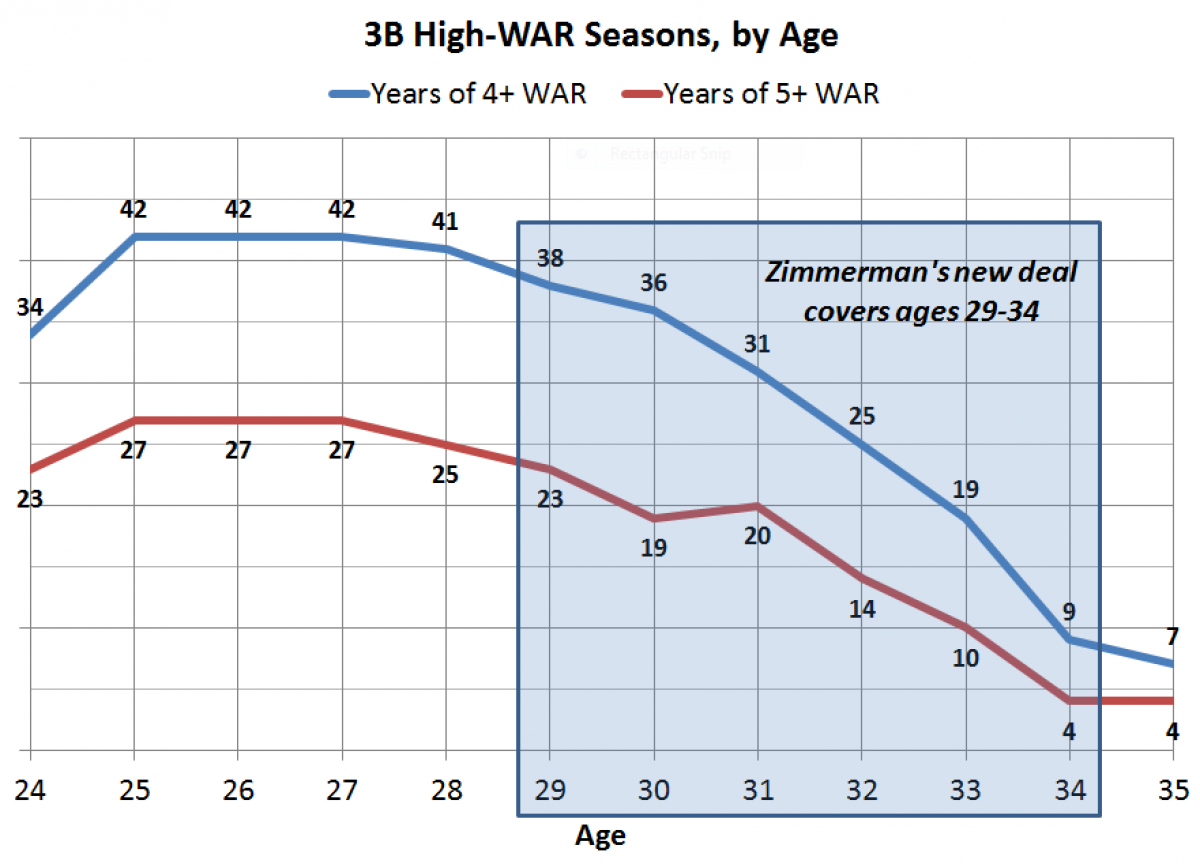It’s been years since people learned to look at OPS (on-base percentage plus slugging percentage) to judge a player’s season. Let’s say a player qualified for the batting title with a .750 OPS. Was that a good season? Continue reading
Category Archives: Uncategorized
The BPP All-Time Dream Project
Graham, our friend over at Baseball Past and Present, has embarked on a cool project to find the 9 best players in history (by position, obviously.) He’s narrowed down the choices on a ballot to make it easy, such as picking the best center fielder among Willie Mays, Mickey Mantle, Joe DiMaggio, Ty Cobb, Tris Speaker, and Ken Griffey. Easy, right?
He’s also commissioned an artist to make a set of team cards for the winning players. Neat stuff–go over and fill out your ballot today!
Age and WAR (position players)
Note: I’ve added a 4th graph at the end of the post, covering only the years 1982-2011.
A couple of graphs relating bWAR/age, and OPS+/age. I’ll leave the observations to you folks.
(1) As a general followup to the graphs in my Ryan Zimmerman post, here’s a graph showing the number of seasons of four different WAR levels, for all position players, for the years 1901-2011:
Does #Astros Brett Myers have the stuff to make it as a closer?
The Astros have announced that Brett Myers is going to be their closer in 2012. Is it a good idea? Continue reading
Baseball stats for beginners: the importance of home/road splits
What do you think of these two players:
Player A: 9014 plate appearances, 414 doubles, 416 homers, 1604 RBI, .320 BA, .920 OPS
Player B: 9102 plate appearances, 332 doubles, 348 homers, 1298 RBI, .277 BA, .789 OPS
Look at that difference in OPS–huge, right? Player A drove in a lot more runs with a much higher batting average.
Among players with 9300 to 9700 career plate appearances, the player with the closest OPS to Player A is Al Simmons. The player with the closest OPS to Player B is Ted Simmons. That’s a pretty good representation of those numbers–Player A is a Hall of Famer while Player B is merely “really good”.
So who are these two players really? Continue reading
The Complete List of Normalized Strikeouts (min. 1000 IP)
On Thursday I posted the leaders for normalized strikeouts along with their adjusted career strikeouts. At the time I wanted to make the entire list available to everyone, but due to technical issues, this was not possible. Today it is.
Thanks to a new plug-in added by Andy the entire list of pitchers is now available, sortable and searchable on this page.
You can also find it listed under “Stats” in the bar on top of the page.
Iron infields: teams whose 4 infielders played the most games
Which teams have fielded the same 4 infielders for the most games in a season? Click through to find out. Continue reading
Nats do another big deal
ESPN reports that the Nationals and Ryan Zimmerman have agreed to a 6-year, $100-million contract extension, with a full no-trade clause. The deal is for the years 2014-19, when he’ll be age 29-34.
That’s right: Zimmerman was already signed through next year for a total of $26 million.
Living in the Postseason – Pitchers with the Highest Percentage of Career IP Coming in the Postseason
The 2011 postseason was quite a ride for Rays pitcher Matt Moore. Not only did Moore pitch 7 dominant innings in game 1 of the ALDS vs. Texas, his 3 relief innings in game 4 gave him 10 postseason IP, more than he had thrown in his regular season career. Moore is the extreme, but there are plenty of active players who have pitched a significant part of their careers in the postseason. This is particularly true for young pitchers of the Texas Rangers. Here are the pitchers who have the highest percentage of their career innings (regular + postseason) coming in the postseason. All stats were derived from information in the Lahaman Database. Continue reading
Gustavo Molina has been around the block but isn’t even a rookie yet!
Thanks to reader John Williams for posting this idea on the suggestions page.





